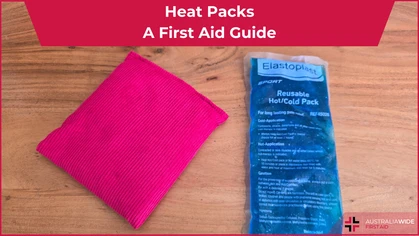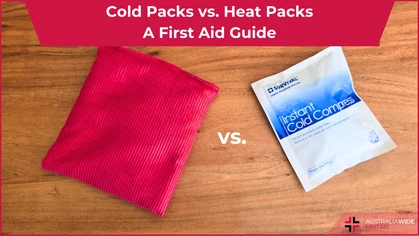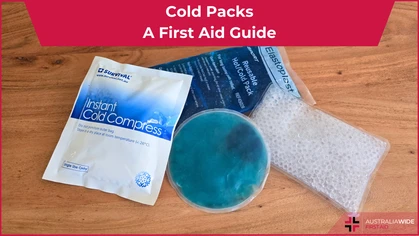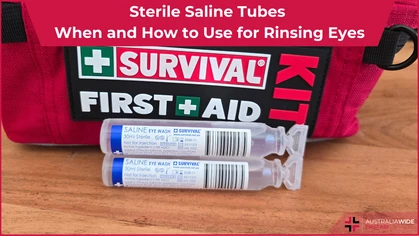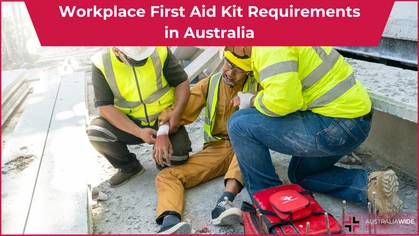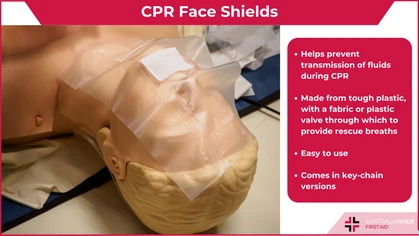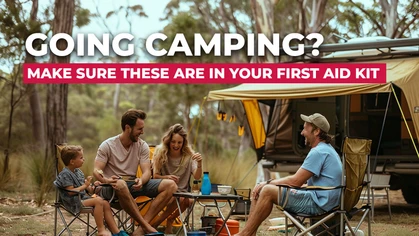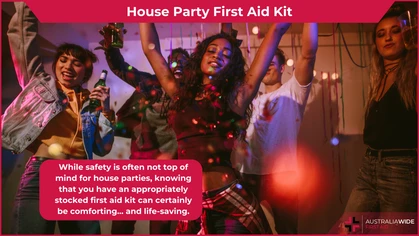DIY First Aid Kit

First Aid Equipment
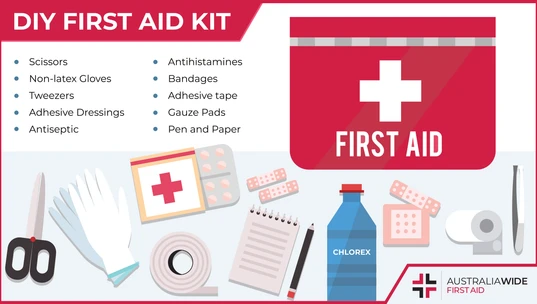
You don't have to be a tertiary educated medical professional to assist yourself, or others, in an emergency. Provided you have the required first aid skills and tools, including a fully stocked first aid kit, you could one day administer life-saving care.
You don’t have to be a doctor to help yourself, or others, in an emergency. If you have the first aid skills and tools to administer the care required, you will be able to fasten recovery time, minimise the risk of infection, and in some situations, save a life. Before you embark on your upcoming holiday, use this checklist as a guide to things you may need in your travel first aid kit. You may need less or more, depending on your travel destination (don’t forget to take into account the remoteness of your visit). Check with your family doctor or local pharmacist if you aren't sure what items are best for you while travelling.Checklist for DIY First Aid Kit
- Adhesive Dressings (various sizes). Commonly known as Band aids, adhesive dressings are used for minor cuts or skin injuries. If you are allergic to the adhesive or latex in the dressings, you can also purchase the hyper allergenic variety.
- Antihistamines. Great for controlling allergic reactions. Can also be effective for motion sickness if taken an hour before the start of journey.
- Antiseptic. Chlorex and Cetrimide. Essential for cleaning wounds and any equipment contaminated with germs.
- Bandages. Ideal for creating support to strained limbs, reduce swelling, or hold dressings in place. Bandages can also be used in place of a sling.
- Cold pack (disposable and instant). Great for swelling or skin reactions.
- CPR Breathing Mask. Provides a one-way flow and prevents the backwash of vomit, blood, liquid from the lungs or other fluid that might diminish the effectiveness of CPR.
- Eye wash. Sodium Chloride 0.9% BP is great for irrigating foreign objects from the eye. Swabs are also worthwhile to have on hand to clean your hands, as well as patient wounds and surrounding skin.
- Gauze Pads (a pack of). We recommend the large size, as they can be cut to size of the wound easily.
- Hand sanitiser. Hand sanitiser or antibacterial gel is convenient as it can be left in your first aid kit, and does not require water to wash away germs.
- Non-Latex gloves. An essential item used to avoid cross infection through blood or bodily fluids. Keep two pairs in the kit just to be safe.
- Oral Rehydration Salts. If you are dehydrated from alcohol, physical activity or illness, this will help you keep your fluids up.
- Pen and paper. In an emergency situation, you may need to write down the signs, symptoms and details of the accident.
- Safety pins. For securing large bandages or holding slings in place.
- Saline. To clean grazes or skin injuries.
- Scissors. Small but sharp, used for cutting bandages. You might also like to include blunt-nosed shears in your first aid kit, as these can be used to cut away clothes, if necessary.
- Stingose. To provide instant relief to mozzie or insect bites. You can also add burn relief gel to your first aid kit to provide relief to minor burns if no cool running water is available.
- Tape (microfibre). Used to hold dressings in place or to protect small cuts or bruises.
- Thermal or ‘Foil’ blanket. In case of an emergency. If a person is in shock, this will help control their body temperature.
- Thermometer. A digital design thermometer is more accurate and can be easier to read.
- Tweezers. Pointed tweezers are easier to remove splinters. You can also try soaking the skin in warm water to make the removal process easier.
You May Also Consider
- An old mobile phone. It will need to have charge to turn it on, but even if your phone contract has expired, the emergency number (for example, 000 or 112) can be dialled and put you through to medical assistance in an emergency situation.
- A torch (with extra batteries). You don’t want to be stuck in the dark while in a foreign environment.
- Keep a note of any life-threatening allergies and blood types of all family members in case of an emergency.
- Regular prescription medication.
Storing your First Aid Kit
A dry, cool location is the best storage environment for your travel first aid kit. Make sure it is easily accessible in your suitcase/backpack and that everyone you are travelling with knows where the first aid kit is located. Before embarking on your travel journey, check the contents of your kit to ensure creams are in date, bandages are properly sealed and the torch is working with spare batteries. If an item is used from your first aid kit, don’t forget to promptly replace it. Tip: If you are travelling internationally by air, be sure to pack your first aid kit in the checked luggage of your flight. Many of the items will not be permitted in your carry-on bag. To be prepared in an emergency, and to learn how to best utilise every item in your first aid kit, Australia Wide First Aid strongly recommends that you take a Australia Wide First Aid strongly recommends taking a one-day first aid course.How to Learn First Aid?
Australia Wide First Aid offers CPR and first aid courses in locations Australia-wide, including in: Disclaimer: This article is for informational purposes only and should not be used in place of advice from qualified health professionals.
Originally published at
https://www.australiawidefirstaid.com.au/resources/20-essentials-travel-first-aid-kit
as part of the Australia Wide First Aid Articles Library
